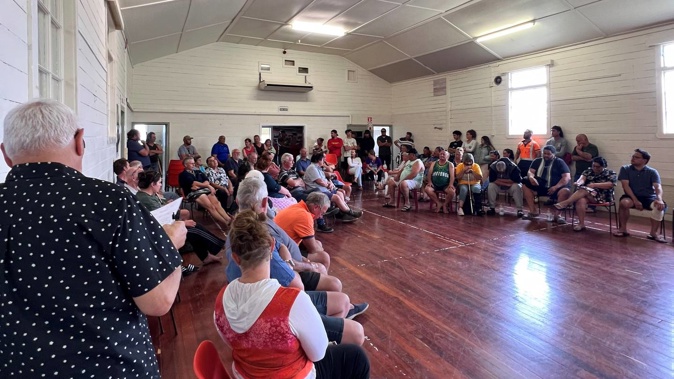
A call for a customary rāhui over the Parimahu reef area in Central Hawke’s Bay produced a lively hui at the Pōrangahau Hall recently.
The Ngāti Kere Hapū Authority (NKHA) called the community-wide hui on Sunday, November 27 after a call from the mana whenua group, Ngāti Kere Tangata Kaitiaki (NKTK) and the whole-of-community group Pōrangahau Taiapure to establish a customary rāhui over the area.
The customary rāhui was proposed as a prelude to a wider inshore fisheries sustainability programme to arrest the depletion of inshore fishery stocks.
The proposal was based on reported difficulties “ordinary people” have in gathering kaimoana, the decreasing ability of Rongomaraeroa to have kaimoana at hākari, alongside widely reported low levels of kaimoana at other Hawke’s Bay mahinga kai areas.
There was some urgency expressed about the upcoming holiday season.
A Facebook post advertising the hui triggered wide discussion, particularly about crayfish stocks and alternate methods of restricting take. The proposed rāhui subsequently narrowed to include only pāua, to be followed up with a MPI Section 186a temporay closure and the development of monitoring and reseeding plans.
The hui was attended by 140 people attended including Ngāti Kere and Ngai Te Whatuiāpiti hapū members and residents from Pōrangahau, Takapau, Blackhead and Whangaehu. Many were recreational divers getting kai for whānau, but commercial divers and fishers and the local DoC ranger also attended.
The community was asked to act together in the maintainance of the fishery for the next three generations.
Speakers talked about the 750-year history of mana whenua with the Parimahu fishery, the Ngāti Kere rohe moana coastline, the history of hapū management tools including Tangata Kaitiaki and customary take, the Taiapure and the Te Angiangi Marine Reserve. Others spoke about the importance of tikanga Māori and local connection with Parimahu.
Views were shared about the depletion of the pāua fishery, specifically that although experienced divers with diving gear could access pāua there is increasing difficulty for “ordinary people to get kaimoana” and definitely a decrease in seafood provision at the marae.
- Couple sentenced for black market paua sale
- Fisherman sold paua on black market
- Joint operation busts Hawkes Bay paua poachers
The proposal for the development of a sustainable fisheries management plan at Parimahu that begins with a customary rāhui over pāua was not universally supported.
There were other ideas like partial rāhui, lowered take of pāua and seasonal-only rules, but all present supported some sort of action around pāua sustainability.
There was wide agreement that a rāhui was unlikely to deter illegal poachers.
There has also been interest in the Hapū Kaitiaki Ranger scheme where young people from across the community are training with DoC to be a presence on the beaches.
Those present agreed that Waimārama, Kairākau, Pourērere, Aramoana, Pōrangahau and Whangaehu all have problems. Urgent action around monitoring and appropriate re-seeding programmes was mooted and the need to reconnect with Government agencies like the Department of Conservation and the Ministry for Primary Industries.
The meeting concluded that pāua stock was in fact depleted, there was agreement around the need for a sustainability plan and rāhui was not entirely ruled out.
A complete report has been sent to the Tangata Kaitiaki and the Taiapure who will consider the next step.
Take your Radio, Podcasts and Music with you







